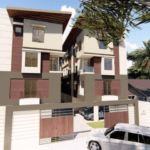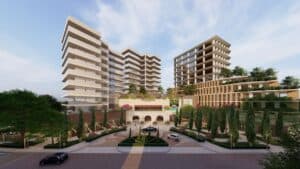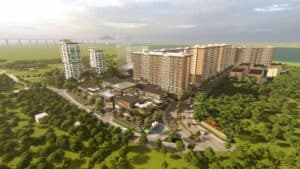
Filipinos can now expect a more efficient transaction for securing property-related documents, as the Department of Human Settlements and Urban Development (DHSUD) set up Housing One-Stop Processing Centers (HOPCs) in their regional offices, Business Mirror reported.
Section 23 of Republic Act No. 11201, the law that created DHSUD, outlines the primary function of the HOPCs: centralizing the processing and issuance of all required housing-related permits, clearances, and licenses.
The establishment of these one-stop centers was made possible by the creation of the Regional Human Settlements and Urban Development Coordinating Committee (RHSUDCC), in collaboration with key shelter agencies (KSA).
The partner-organizations include the Home Development Mutual Fund or Pag-IBIG Fund, Human Settlements Adjudication Commission, National Housing Authority, National Home Mortgage Finance Corporation, and Social Housing Finance Corporation.
Decent, Affordable Housing
According to Secretary Eduardo del Rosario, the collaboration of different government organizations is a testament to their commitment to “provide resilient and sustainable homes and communities to the underprivileged.”
One of the department’s major programs is the BALAI project, which stands for “Building Adequate, Livable, Affordable and Inclusive” Housing. Among the recent projects of the program is the development of housing units for farmers in Barangay Carayungan Sur, Umingan, Pangasinan.
Together with the Department of Agrarian Reform, DHSUD aims to build at least 180 housing units in the two-hectare land donated by the municipal government, as reported by the Philippine Information Agency. The houses will feature eco-friendly designs.
Under BALAI, the department also has an initiative called BALAI-Net, which involves the installation of connectivity infrastructure in socialized housing projects. In February, the Business Mirror reported that the housing department signed a memorandum of agreement with Alpha-3 Technologies, providing internet bandwidth of up to 100 Mbps per household for selected relocation sites.
Del Rosario has reassured the public that there would be no “substandard housing units and projects” under the current administration, as mentioned in this Manila Times article.
In terms of housing affordability, last month, the Manila Bulletin reported that the Lower House gave a nod to House Bill 8736, which seeks to establish a rental subsidy program for informal settler families (ISFs). The proposed law allows ISFs living in Metro Manila to secure a flat rental subsidy of P3,500.
The DHSUD and the National Economic Development Authority are in the process of finalizing the rate of subsidy for ISFs living in other regions.
Pag-IBIG Fund, for its part, was reported to release P7.18 billion worth of socialized housing loans, helping almost 17,000 members belonging to the minimum-wage and low-income sectors in 2020, as Business World reported.
The agency’s affordable housing program offers a subsidized rate of three percent per annum for eligible members who have a monthly earning of less than P15,000 within Metro Manila, and less than P12,000 a month outside the capital region.
Provincial Development
In the Business Mirror report earlier mentioned, Secretary del Rosario also said that the collaborative efforts of government agencies on housing initiatives will facilitate development in the countryside. The infrastructure projects outside the capital region will likely complement this positive development.
The two urban centers in Visayas and Mindanao have received approval of big-ticket projects, as well as ramped-up construction. In Cebu, Cebu-Cordova Link Expressway (CCLEX) is in the final stages of civil works, while the construction on the third segment of the Metro Cebu Expressway is ongoing.
Meanwhile, in Davao, the Bypass Road Project, which features the first-ever long distance mountain tunnel in the country, and the Tagum-Davao-Digos segment of the Mindanao Railway are set to begin construction soon.
Areas near Metro Manila had likewise seen infrastructure projects. The province of Laguna and Cavite will benefit from the completion of the Cavite-Laguna Expressway, North-South Commuter Railway, LRT-1 Cavite Extension, and LRT-6 (stretching from Niog to Dasmariñas). Meanwhile, the transportation department will start construction on MRT-4, which connects Metro Manila cities to the province of Rizal, in 2023, Inquirer reported.
The delivery of these infrastructure projects can contribute to the further development of areas outside Metro Manila.
Since the pandemic, the movement towards the provinces has become a more attractive option for property seekers. This likely stemmed from the availability of more open spaces in these areas, allowing easier social distancing and freer leisure activities. Moreover, the new normal of work-from-home arrangement has prompted property seekers to explore alternative locations for residences.
Article and Photo originally posted by Lamudi last April 19, 2021.







More Stories
Vista Land Celebrates 50 Years with Sandiwa: An Event Honoring Leadership, Legacy, and the Filipino Dream of Homeownership
Vista Land Celebrates Love Month in Ilocos Region
Vista Land Bridges Cebuano Heritage and Progress with Valencia by Vista Estates